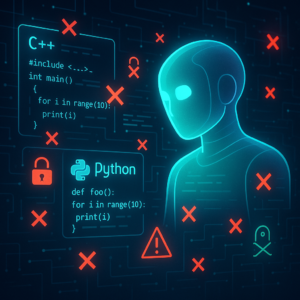LLM+AL: Bridging Large Language Models and Action Languages for Complex Reasoning about Actions

LLM+AL: A Game-Changer in Reasoning about Actions
If there’s one thing that’s lighting up the tech horizon like fireworks at midnight, it’s Large Language Models (LLMs). These AI marvels, trained on giant reserves of text data, are proving to be wizards at generating human-like responses and tackling a myriad of intelligent tasks. Yet, even wizards have their limits, and for LLMs, that bottleneck appears with tasks requiring complex reasoning about actions. Enter LLM+AL: a bridge between the nuanced capabilities of LLMs and the symbolic reasoning proficiency of action languages.
Buckle up as we journey into this intriguing development and see how LLM+AL is setting a new benchmark in AI reasoning.
The Challenge: Why LLMs Struggle
Before diving into the solution, it’s crucial to understand the problem. Large Language Models, despite their prowess in understanding and generating text, often hit a wall with tasks that demand systematic reasoning. These are tasks where simple pattern recognition isn’t enough, and that’s where action reasoning—a field that hinges on understanding a series of events, prerequisites, and outcomes—comes into play.
When an LLM is asked to perform tasks that require understanding sequences of actions or predicting outcomes from complex scenarios, it typically falters. Purely neural approaches might be able to parse sentences grammatically but struggle to predict or infer downstream consequences without getting sidetracked.
Enter: Action Languages
Action languages are like the tacticians in a game’s strategy room. They excel in automated reasoning, especially when dealing with problems where actions must unfold in sequence. These languages can encode knowledge symbolically, meaning they can logically deduce outcomes from defined actions, states, and rules. Think of them as the logic-based brains behind decision making, constructed meticulously to understand how actions interact to produce what’s next.
Bridging the Gap: LLM+AL in Action
The LLM+AL framework marries these two powerful paradigms, taking the semantic might of LLMs and coupling it with the reasoning clarity of action languages. The goal? Achieve a synergy where each complements the other’s weaknesses.
-
Semantic Parsing: Here lies the LLM’s forte. By converting real-world problems into a form that action languages can understand, semantic parsing bridges the natural language and symbolic world.
-
Commonsense Knowledge Generation: LLMs, trained on vast corpuses of text, brim with embedded commonsense knowledge. They use this to inform action languages, providing context where rigid formal systems might fall short.
-
Automated Reasoning: This is where action languages take the steering wheel. Once problems have been parsed and contextualized, these languages excel in logically reasoning about the steps needed to resolve a given complex scenario.
Practical Implications: What Does This Mean for You?
Alright, this is all well and good, but why should you care about LLM+AL outside of academic curiosity? Here’s the kicker: as this technology matures, it has the potential to revolutionize industries reliant on complex task automation.
Imagine logistics systems that can not only understand natural language instructions but also figure out logistics conundrums on their own. Picture gaming AIs that can parse and predict intricate player behavior, stepping up the realism and challenge. How about legal systems that might one day not only parse legislation but accurately predict legal outcomes based on changing laws?
Comparing to Standalone Models: The Competitive Edge
To get a sense of LLM+AL’s robustness, the authors of the study pitted it against some of the industry’s heavyweights—ChatGPT-4, Claude 3 Opus, Gemini Ultra 1.0, and o1-preview. While all models made errors (as AI tends to do), LLM+AL stood out. It needed only minimal human correction to consistently arrive at the correct answers, contrasting sharply with other models that often failed to improve even with feedback.
This indicates a promising pathway towards more autonomous systems that can refine themselves without overwhelming human oversight.
The Future of Automated Action Language Generation
As an intriguing byproduct of their research, the authors noticed that LLM+AL could also contribute to the automated generation of action languages. This could lead to the development of new frameworks to enrich AI’s ability to reason and adapt, expanding the boundaries of what these intelligent systems can achieve autonomously.
Key Takeaways
- LLM+AL is a New Step: It’s an innovative blend that merges natural language prowess with symbolic reasoning—offering significant advantages over standalone AI systems.
- Expanding Frontiers: From logistics to gaming, this hybrid system could transform sectors that deal with complex task automation.
- Promising Results: Compared to leading large language models, LLM+AL demonstrates a clearer path to accuracy with minimal human intervention.
- Future of AI: Automated action language generation is on the horizon, promising to push the envelope in AI reasoning.
As we march towards an AI-rich future, it’s efforts like these that will determine how effectively we navigate the growing complexity of intelligent systems. Here’s to a future where AI not only understands language but also the nuanced dance of actions it entails. Welcome aboard the LLM+AL journey!




